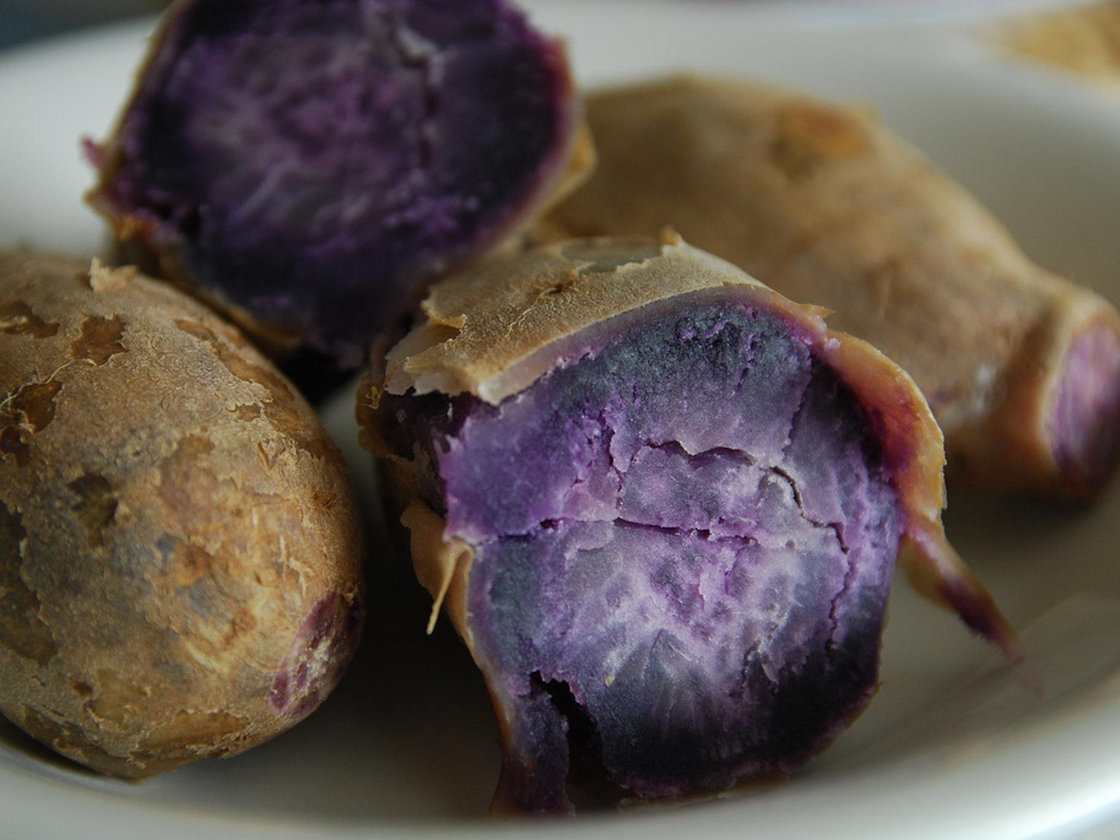Talcott says purple sweet potato pigments are unique because they have "tremendous" color stability. In other words, they have more intense color and a wider color range — from raspberry red to grape-like purple — than other deeply hued fruits or vegetables. They're also well-suited for food products because they have a neutral flavor — unlike grapes, which have good color but bitter tannins. The sweet potato pigments even boast slight health benefits — they are mildly anti-inflammatory and anti-carcinogenic, Talcott notes.
But these pigments aren't exactly easy for scientists to extract — that's one reason there isn't more of this dye around. The hard texture of the potato makes the pigment hard to get to, which is what Talcott's lab has been trying to crack.
Another problem is the supply. Few farmers grow purple sweet potatoes, and the dye currently costs about $136 per pound.
But Talcott argues that as consumers learn to scrutinize their food labels more carefully, they'll push the food industry to grow the natural food coloring market.
Some parents are increasingly seeking out natural food coloring, out of fears about how the lab-made dyes effect children — though there's little scientific evidence to back such fears up. Back in 2011, a Food and Drug Administration advisory panel found that the current scientific data did not show that artificial food dyes cause hyperactivity in most children.
Still, food advocacy group Center for Science in the Public Interest asked the FDA to require that the label of a food containing color additives read "Artificially Colored" on the package next to the product name — something the agency already requires of many artificially colored products.
Even some "natural" dyes, like a red dye made from the cochineal bug, don't make the cut for some consumers. Back in 2012, we reported that Starbucks was ditching the dye — which is made from crushed bugs — after vegetarians and others protested that they had no idea their Strawberries & Crème Frappuccinos were tinted with bug extract.
Other companies continue to use cochineal, however, and CSPI is lobbying Groupe Danone, which makes Dannon yogurt, to replace the bug-based dye with more of the fruit advertised on the yogurt's label.
Copyright 2013 NPR.
